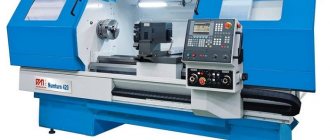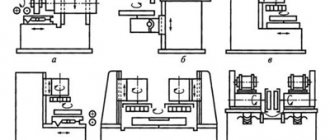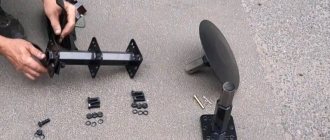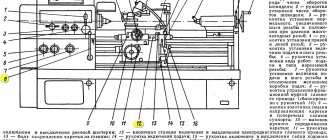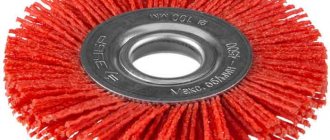One type of final metal surface treatment is grinding. It involves removing the surface layer using various tools using abrasive materials. Metal grinding allows you to solve the following problems:
- remove all remaining irregularities after preliminary finishing;
- achieve high accuracy of the required dimensions of the part (geometric dimensions, internal and external diameters, compliance with the given shape of the surface of higher orders: parabola, ellipsoid, and so on);
- giving the detail aesthetic appeal.
Surface grinding work on metal in Moscow
Metal grinding in Moscow is actively developing.
In modern production facilities you practically no longer see old machine tools from the USSR era: they are being replaced by compact modern equipment. It not only allows you to perform metal grinding with better quality, but also has low energy consumption. The possibilities of metal grinding on machines are also changing for the better. If a couple of decades ago machines could only process flat surfaces, today metal profile grinding also works on the surfaces of shaped workpieces.
Gear grinding
Gears are part of a wide variety of mechanisms. The complexity of the shape of the working part determines that special grinding equipment has to be used. Among the features of this technology, we note the following points:
- The profile of the ring gear is processed.
- The circle changes to the size of the tooth involute.
- Special machines are suitable for working with gears.
Gear grinding
Often the tooth surface is hardened, which makes the machining process significantly more complicated.
Advertisements for the request “grinding work in Moscow”
You can find out a lot about grinding metal surfaces in Moscow and the price of this service on the Internet.
For example, on message boards for services and vacancies. Thematic catalogs offer information about metal grinding services. But accessing these resources is like playing the lottery, where the winning cry is “bingo!” doesn't always sound like that. If you require complex work, for example, grinding small metal parts, it is better to contact a company that has a personal website with clear information and prices for services.
Processing parts before grinding
As previously noted, sanding is the finishing step. Before it is carried out:
- Rough turning of metal. Due to this operation, the workpieces are given the required shape and dimensions, taking into account the allowance.
- Finish turning is carried out to give the required dimensions.
- Milling is another technological operation that involves mechanical removal of metal. Most often, housing parts and gears are milled.
- Heat treatment. In order to significantly increase the surface hardness and strength of the product, hardening is carried out. The fragility of the structure can be reduced by tempering and annealing. In some cases, thermochemical treatment is carried out, which involves introducing certain chemicals into the surface layer.
Processing parts before grinding
When developing processing modes, allowance for all technological operations is taken into account.
Services for grinding and polishing metal products
Along with grinding work on metal, the capital's workshops also perform polishing work, after which the products acquire a pleasant metallic shine and even gloss. Polishing of small metal parts is carried out in cases where there is no need to apply coatings to its surface. For example, along with aluminum grinding, polishing services can be ordered as ancillary services. Along with grinding and polishing of metal, its satin finish stands out - a treatment after which the material acquires a satin shine.
Sanding flat surfaces
Flat body blanks made of various metals are often processed. The operation to change the surface roughness is characterized by the following features:
- The workpiece is placed on a special table, which ensures reliable fastening. Fixation can be mechanical or magnetic.
- The main rotation is transmitted to the abrasive wheel, reciprocating the workpiece or tool.
Sanding flat surfaces
By selecting a wheel with the most suitable profile, it is possible to process the most complex shapes. During operation, coolant can be supplied to the contact area between the tool and the workpiece.
Surface grinding methods
Metal grinding - services are quite diverse.
The effective tool for performing this type of work can be the periphery or the end of the circle. When circularly grinding metal, high productivity of the equipment is guaranteed, however, during contact with the metal, significant heating occurs, which can affect the accuracy of the operation. According to the method of performing flat metal grinding with a machine, single-pass and double-pass processing are distinguished. In the first case, the machine operates vertically along the entire length of the workpiece and performs the operation in one go. In the second, both ends of the part are processed synchronously, and one pass of the tool is not enough for this.
There is also deep-feed grinding of metal parts with a minimum feed speed. With this method, the allowance is removed with each stroke of the tool, so its replacement is required quite often.
In addition to dry metal grinding, there is wet grinding, which uses water and waterproof sanding paper. But this technology is not so popular, since there is a risk of corrosion on the metal surface.
Main types of grinding
Grinding of parts can take place using a variety of technologies. The most widespread are the following:
- Circular grinding of metal.
- Changes in the roughness of internal surfaces.
- Gear grinding.
- Centerless technology.
- Sanding flat surfaces.
In addition, classification can be carried out according to the type of material used during processing. To automate the process and reduce labor costs, specialized machines are used. There are also models with a built-in CNC unit, which automates the process and ensures high quality of the resulting surface.
Surface grinding work in neighboring regions
Flat grinding services are also offered in regions adjacent to the Moscow region, and at a lower price.
Many customers, attracted by the opportunity to save money, try to entrust them to enterprises located in other regions, but inevitably lose. The reason is simple: gasoline and freight prices continue to rise steadily. To order cheap metal polishing, you don’t have to go anywhere. The equipment of our workshop, work on “native” and not on rented premises allows us to offer very comfortable prices.
Characteristics and marking of abrasive tools
In most cases, when grinding metal, an abrasive tool is used. It is represented by a combination of a large number of grains, which are interconnected by a special lubricant. The circle is characterized by the following properties:
- Form. The working part may vary depending on what type of surface will be processed.
- Dimensions. The abrasive wheel is also selected by size depending on the dimensions of the surface being treated.
- Type of material used in manufacturing. The crumb can be made from crumbs of different hardness. Diamond chips are characterized by greater resistance to abrasion.
- Grain size. For fine grinding of metal, a wheel with the smallest grain size is selected. However, as the grit size decreases, the required time to complete processing increases.
- Surface hardness. This parameter is one of the main ones, indicated during labeling.
- Mounting hole size. It is taken into account when selecting a wheel for the characteristics of the machine.
The production of abrasive materials is carried out in accordance with established standards and technical conditions.
Circle markings are used to indicate the type of material used in manufacturing. Electrocorundum is artificial corundum based on aluminum oxide. There are several varieties of circles available for sale:
- Normal 14A and 15A, 16A.
- White 22A, 23A and 24A.
- Chrome 32A and 33A.
- Spherocorundum ES.
Silicon carbide can also be used. There are two types of stamps on sale: black and green. Boron carbide is marked with the letters KB. Recently, the most popular options are made from synthetic diamond; they are marked ACP and ASO, ARV and ARC.
Abrasive materials
Types of grinding operations in Moscow
But the purpose of grinding operations can be different, and they can be performed on internal and external cylindrical surfaces, flat and shaped products, as well as holes of various diameters. In accordance with this, it is customary to distinguish:
- centerless grinding operation,
- internal grinding,
- coordinate grinding,
- cylindrical grinding
- surface grinding,
- thread grinding,
- CNC grinding operation.
During internal grinding, the inner surface of cylindrical and conical holes of rotating bodies is ground. The workpiece can rotate or remain stationary. The method allows you to bring the cleanliness of the holes to the specified parameters.
In centerless grinding, the workpiece is not fixed to the machine, but is moved between abrasive tools. This method allows you to grind the internal and external surfaces of cylindrical products.
Cylindrical grinding of external surfaces - the most common - can be performed by cutting into the surface layer of the workpiece, with ledges, in depth, or with transverse and longitudinal feed. Used for grinding the end and cylindrical surfaces of shafts or other rotating bodies with or without shoulders.
If the requirements for the accuracy of the ground surface are quite high, it is optimal to perform a coordinate grinding operation. Coordinate tables allow you to move workpieces and abrasive tools along a given path, so even complex parts can be processed as accurately and efficiently as possible.
An acceptable alternative to milling when machining flat surfaces is the surface grinding operation. For rough grinding, roughing machines are used; high purity (grade 8-10) is achieved on precision machines. The surface grinding operation can be performed with longitudinal or circular feed.
Thread grinding can effectively process conical or cylindrical external threads, screws, taps, hobs, etc.
But still, the CNC grinding operation is rightfully considered the most accurate and productive, thanks to process automation.
Metal grinding methods
Currently, a large number of methods for finishing metal have been developed, which are implemented using special machines and equipment. Metal grinding is classified according to the following criteria:
- the chosen method;
- equipment used (special or standardized machines);
- abrasive materials used;
- processing depth;
- required accuracy;
- mechanical or manual grinding.
The main methods include:
- grinding surfaces that have a flat shape (this method is used to process external surfaces that have a given curvature);
- cylindrical grinding;
- centerless processing;
- gear grinding;
- grinding of internal surfaces.
The second feature includes specialized machines:
- belt grinding, cylindrical and surface grinding, internal grinding, centerless grinding machines;
- general purpose machines (lathes, milling, drilling);
- special equipment.
Each type of machine is used to perform a whole list of similar operations. For example, the peculiarities of the process of grinding metal with a cylindrical grinding machine consist in performing the operation on cylindrical parts. The internal grinding machine is used for finishing the internal surfaces of metal. All machines are divided into two large categories: with the use of electronic controls (performing CNC operations) and without such equipment. The first type allows you to solve a wide range of problems. They are equipped with a whole range of tools and accessories. The sequence and methods of metal processing are specified by special software.
Machines designed to perform other operations (lathe, milling) are used in conjunction with tools that can be equipped with abrasive material (belt or wheels). The quality of metal grinding depends on the rotation speed and the size of the abrasive chips located on the wheel used.
Special grinding equipment involves performing highly specialized operations. It is capable of solving specific problems at the stage of preliminary or final preparation of parts.
Cylindrical external grinding
This method involves the use of special cylindrical grinding machines.
The operation of such machines is based on the principle of sequential pressing of a part to the surface of an abrasive tool. Depending on the degree of pressure and the size of the abrasive element, the required accuracy is achieved. Cylindrical grinding has a number of advantages that allow you to obtain high quality and reduce surface roughness:
- parts may have quite large dimensions;
- the machines have the ability to fine-tune technical parameters on which the quality of grinding depends;
- a wide range of manufactured machines (from desktop to large-sized) allows you to select the required copy and solve the problem based on the ratio of efficiency and cost.
Circular grinding of metal is used in almost all branches of machine tool construction, automotive and aircraft construction, and metalworking.
Internal grinding
To solve such problems, internal grinding machines are used. Their main feature lies in the way the workpiece and the grinding tool interact. Depending on the design, the following types of interaction are used:
- rotation of the workpiece and direct feeding of the grinding tool;
- feeding the part to the rotating grinding device;
- combined feed (it can be parallel or transverse).
Internal grinding is used in the manufacture of the following products:
- various bearings (ball and roller);
- vehicle transmission products (shock absorbers);
- hydraulic and pneumatic devices.
Internal centerless grinding allows you to solve the following problems:
- improve the quality of the inner surface of the metal;
- eliminate axial displacement of the finished hole;
- give it the correct round shape of a given diameter.
Gear grinding
As the name suggests, it is the process of grinding the teeth of various gears, gears and worm gears to a specified pitch, size and shape of the teeth. Grinding is carried out in three ways:
- rolling method with continuous grinding;
- the same method with periodic division;
- profile grinding.
The first method is to grind both surfaces of each tooth at the same time. Thanks to this, it is possible to achieve high process productivity. With such processing, it is quite difficult to take into account processing errors, which depend on the tooth pitch. The use of the second method eliminates this drawback. In this case, the grinding speed of the entire gear is reduced.
Profile gear grinding allows you to grind metal in one pass. With the correct setting of the tool position parameters, it is possible to obtain a surface with a high degree.
To improve the quality of the resulting parts, gear honing is used. In this case, instead of the standard abrasive material, a special mixture of white electrocorundum, chromotitanium and boron nitride is used. It has unique abrasive properties. With its help it is possible to obtain the highest degree of grinding.
Centerless grinding
This type of grinding is used to process internal and external metal surfaces. Sanding the outer part is done in two ways:
- The first method involves processing workpieces that are long. A prerequisite is to maintain a constant diameter along the entire length of the part.
- The second method is to process surfaces on which there are technological recesses, grooves, and various cutouts. It is used to grind shaped and stepped parts.
In the first case, the tool is fed longitudinally while simultaneously rotating the part around its axis. To obtain the best effect, the axis of the drive shaft during rotation is located at a certain angle relative to the grinding axis. This angle is determined by the diameter and length of the workpieces.
The second method involves changing the feed of the grinding tool depending on the configuration of the metal product. It allows you to obtain high precision and quality of the machined surface.
The centerless grinding method is used in many enterprises that produce products in large quantities. It has high performance. Thanks to its advantages, it allows you to obtain good quality grinding of industrial metal products.
This method is used to process the internal elements of metal parts. The approach to implementing this method is similar to the processing of external surfaces. The grinding wheel is fed into the internal hole of the part.
Sanding flat surfaces
Very often there is a need to process flat surfaces.
Flat grinding of metal parts involves three types of operations: roughing, roughing, and finishing. The first type of operation is performed when it is necessary to remove a hard surface layer of metal, and it is difficult to plan or mill the metal. Cast iron parts, joints of welded structures and certain types of steel blanks are processed in this way. Rough and finishing flat metal grinding is applied sequentially. This allows you to achieve high precision and obtain a perfectly flat metal surface with a minimum roughness index. Surface grinding work is performed on special machines using abrasive wheels of varying precision. Depending on the task at hand, a single-pass or multi-pass metal grinding method is used. The second is performed using fine abrasive, which reduces the impact of forces on the surface being processed, leads to an improvement in temperature conditions, and reduces possible deformation during processing.
Technologically, flat metal grinding is implemented as follows. The part is fixed on a stationary machine table. Fixation can be mechanical or magnetic. Metal processing is carried out using a grinding wheel. During operation, it makes rotational and translational movements.
Abrasives used
The basis of any metal grinding tool is an abrasive material. It consists of grains of a certain size, held together with a special adhesive. Depending on the size of the crumb, an abrasive tool is used for processing with a given precision. Abrasive tools are manufactured in the form of:
- circle (the range of diameters is quite wide);
- shaft (for internal processing);
- tape or circular tape;
- sheets (paper or special fabric can be used as a backing).
Natural (natural) and artificial stone are used as abrasive chips. At industrial enterprises and processing shops, abrasive tools with artificial material are used. It has improved physical and mechanical characteristics.
Did you like the article? Be sure to share your opinion in the comments section!



